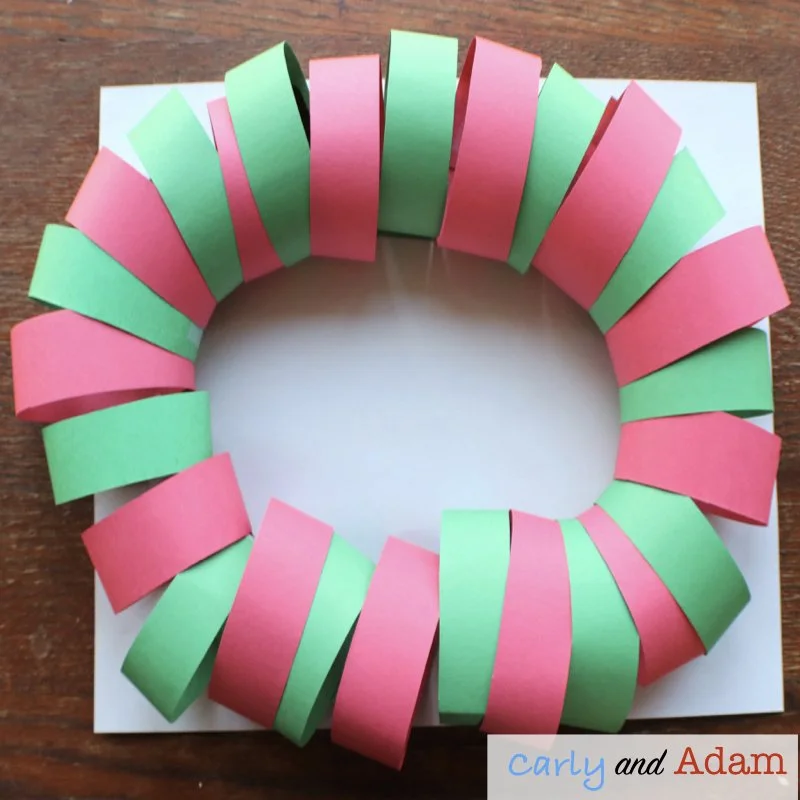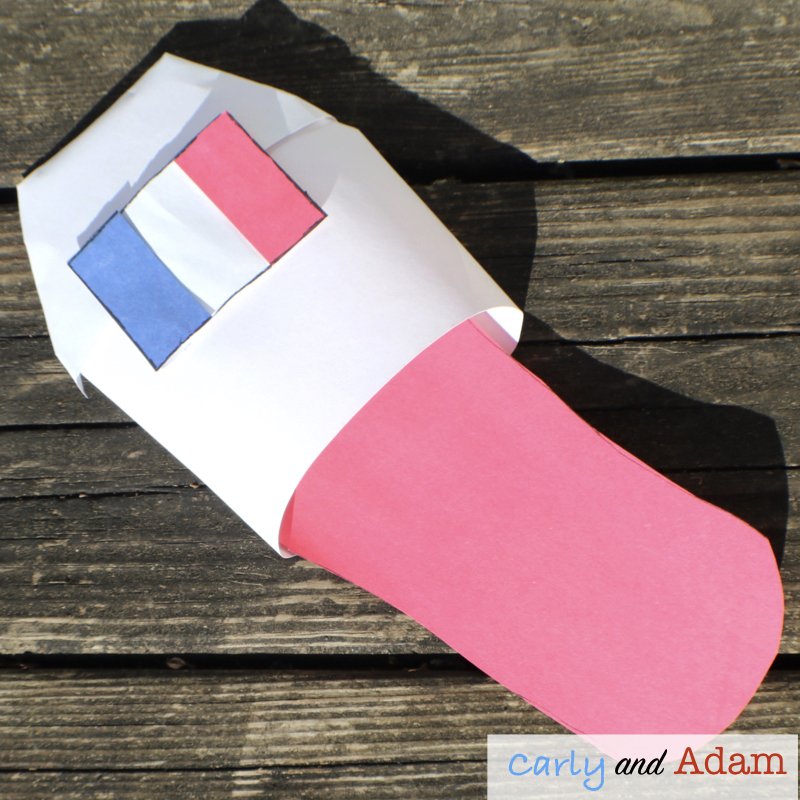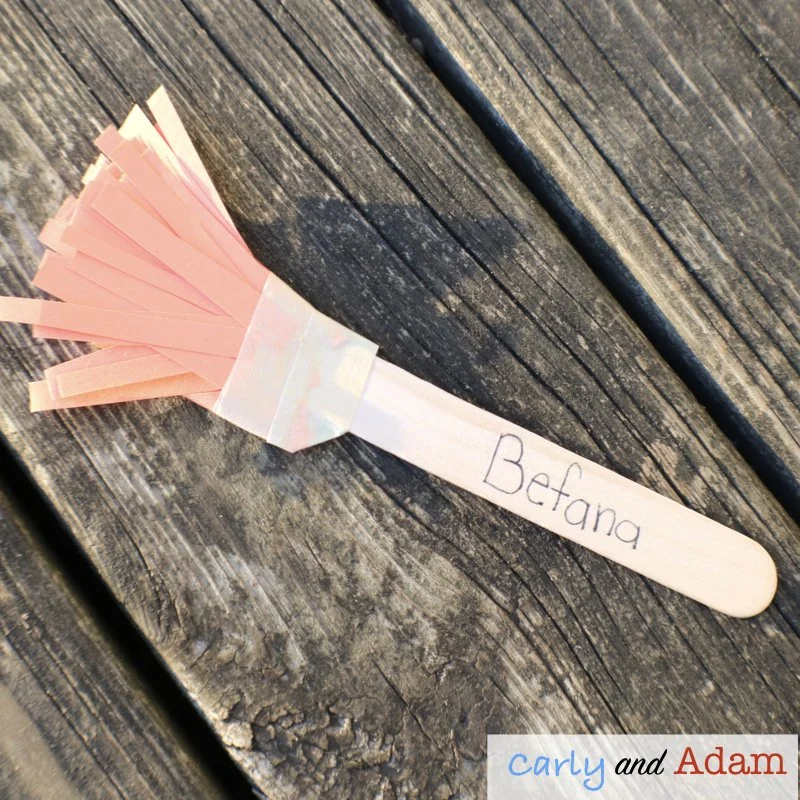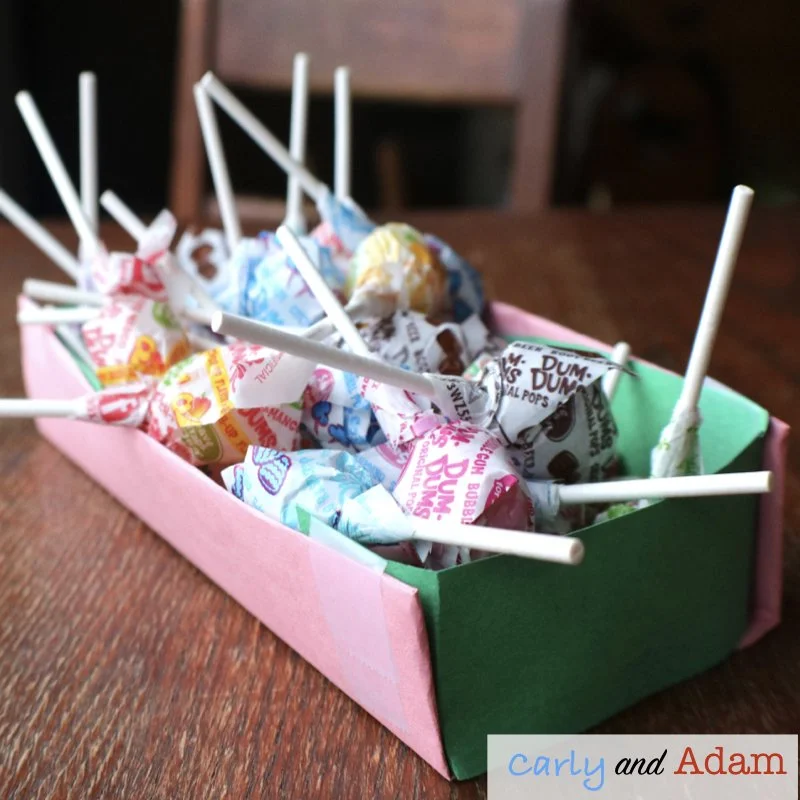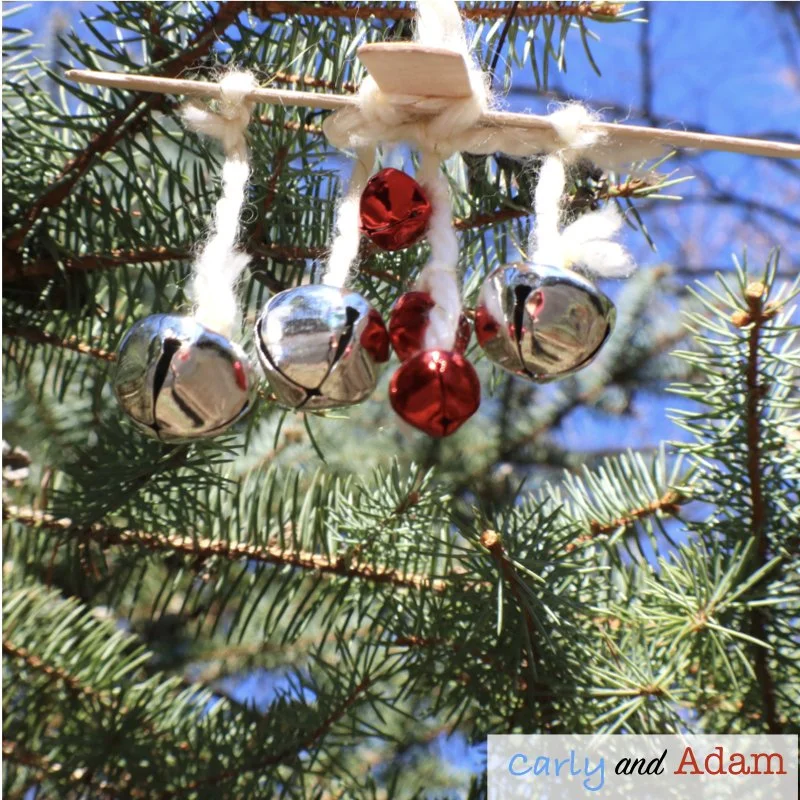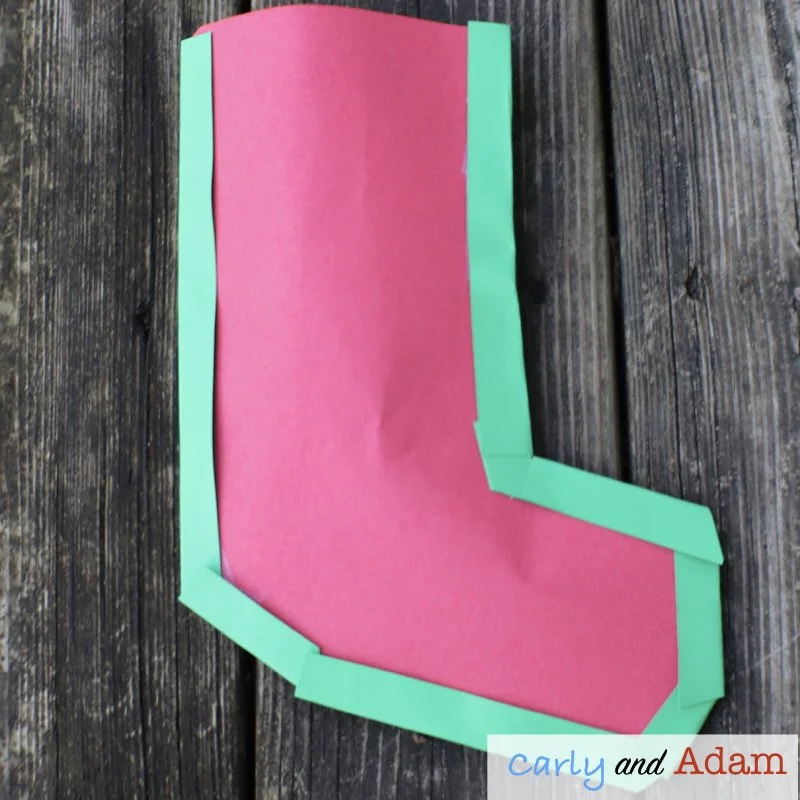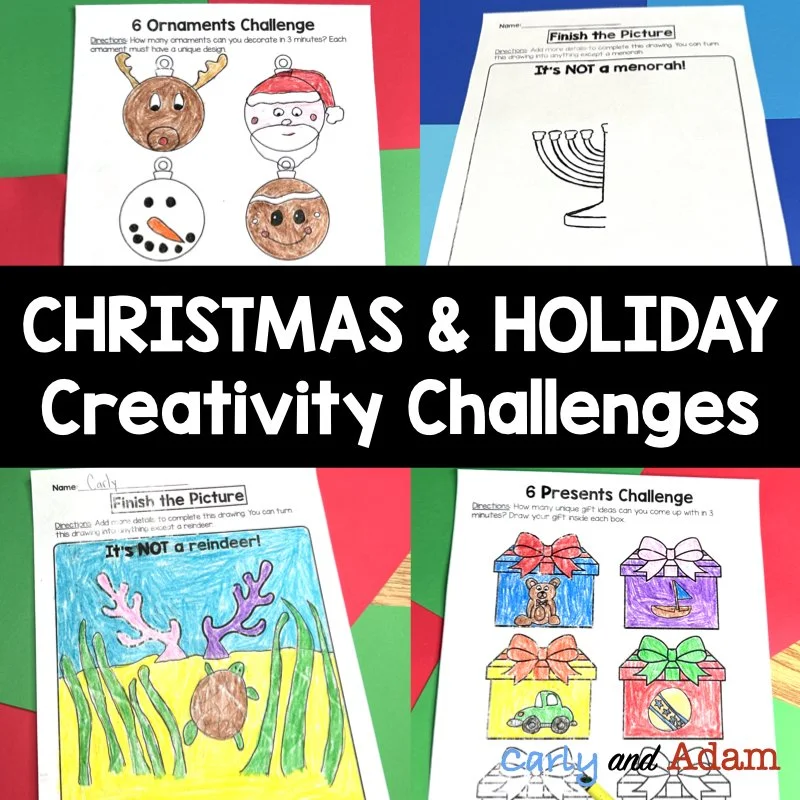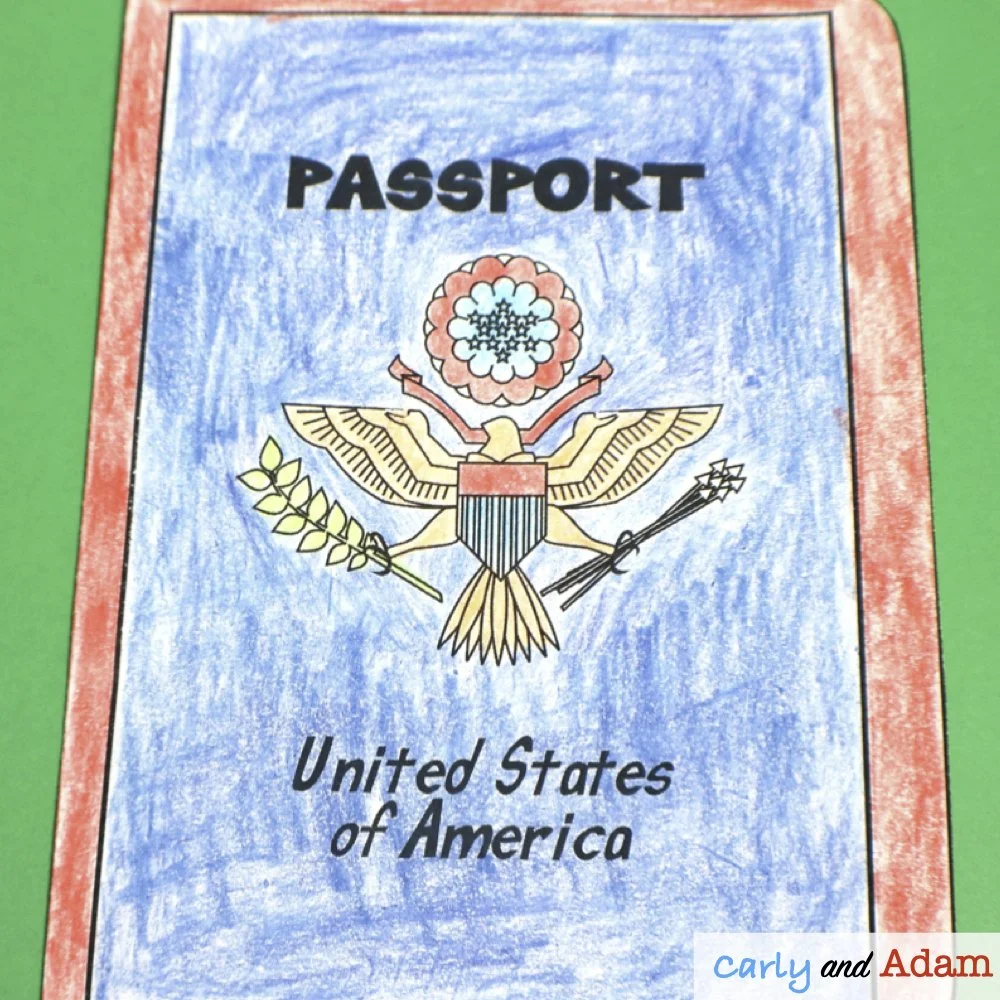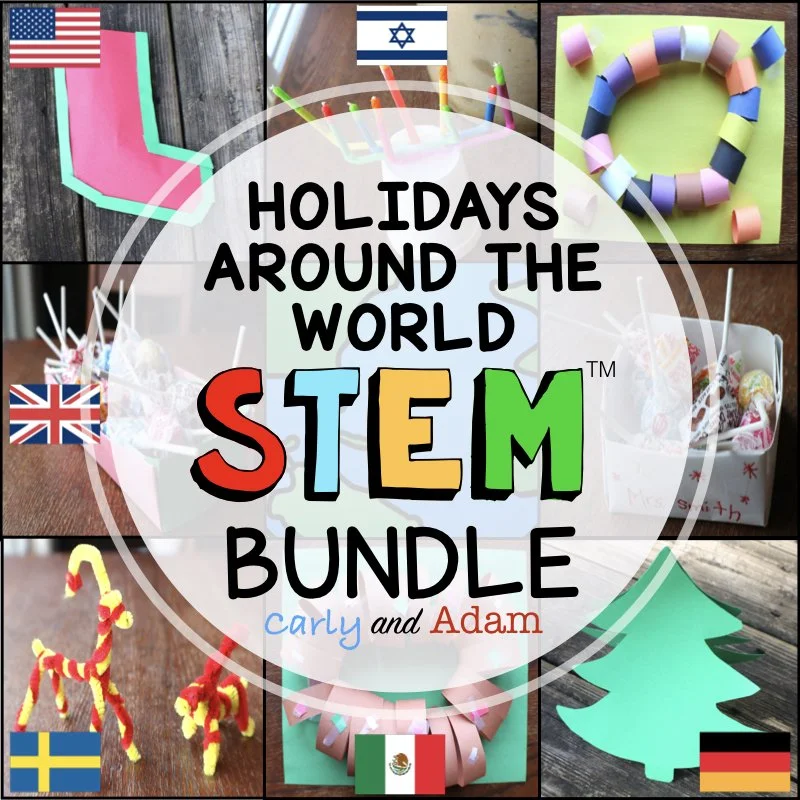10 Christmas and Holidays Around the World STEM Challenges and Activities for Kids
Travel around the world in your classroom this holiday season! Don't just simply teach your elementary students about holidays in other countries, engage them with STEM! We’ve created a bundle of STEM resources that are perfect for your Holidays Around the World Unit. These activities will have your students reading, writing, and completing hands-on STEM activities that reinforce the important cultural traditions of each country.
Here are 10 Christmas and Holidays Around the World STEM Challenges for your Elementary Classroom:
1. Mexico - Three Kings' Day
Christmas is celebrated in Mexico from December 12 through January 6. Three Kings’ Day, also known as Epiphany, falls on January 6. It is believed to be the day that the Three Wise Men visited Jesus after his birth. This holiday is widely celebrated in Spanish-speaking nations with a variety of traditions, rituals, and symbols marking the end of the 12 Days of Christmas. Today, children celebrate Three Kings’ Day by receiving gifts, symbolic of the gifts brought by the three kings. In Mexico, bakers make a “Rosca del ray”, a sweet bread meant to represent a king’s crown.
Challenge your students to explore how Mexico celebrates Christmas and Three Kings’ Day. In this STEM challenge, students will learn to work cooperatively in small groups, or on their own, as they explore Christmas traditions in Mexico while creating their own Rosca del ray.
Learn more about this challenge HERE.
2. Israel - Hanukkah (Chanukah)
Hanukkah is a Jewish holiday that can start as early as late November. The holiday lasts eight days and is a celebration of the rededication of the temple in Jerusalem. Hanukkah is also called the Festival of Lights and the Feast of Dedication.
A very important Hanukkah tradition includes lighting the menorah. The menorah has eight branches to hold eight candles that are lit each night of Hanukkah. There is another branch as well that is usually in the middle of the menorah and sits up higher than the other candles. This place on the menorah is for a special candle called the shamash. In Hebrew, shamash means helper or servant. This candle is used to help light all of the other candles.
Watch your students as they learn with this engaging holidays around the world STEM challenge. Your students will explore Hanukkah in Israel and create a menorah of their own.
Learn more about this challenge HERE.
3. France - Père Noël
The Christmas tree is not a very popular tradition in France. The most common Christmas decoration is the nativity scene. Another important tradition is the Yule log. As part of this tradition, families would cut down a tree and put the pieces in the fireplace a little bit at a time during the Twelve Days of Christmas. While this tradition is becoming less popular in France, cakes in the shape of a Yule log are still very common.
In France, Santa Claus is called Père Noël (Father Christmas). On Christmas Eve, children put their shoes by the fireplace for Père Noël to fill with presents. Children may also get small toys or candy. In northern France, children have to wait until December 6, St. Nicholas Day, to get gifts. Adults usually exchange gifts on New Year’s Day.
Journey to France to learn how they celebrate Christmas! In this STEM challenge, students will read about Christmas in France and engage in hands-on learning by creating a shoe out of construction paper for Père Noël to fill with presents.
Learn more about this challenge HERE.
4. Germany - Tannenbaum
One very important tradition in Germany is the Christmas tree. It is thought that the Germans were the first people to put trees in their homes as part of the Christmas celebration. According to tradition, families get their tree on Christmas Eve, and it is the job of the mother to decorate it in secret. In Germany, a Christmas tree is called Tannenbaum.
Another popular tradition in Germany is the Christmas markets. At these Christmas markets, food and decorations such as ornaments are sold. Although these Christmas markets started in Germany, the tradition has spread to many other parts of the world. In Germany, presents are exchanged on Christmas Eve rather than Christmas Day.
Your students will love this engaging Christmas Around the World STEM challenge focusing on German holiday traditions. In this STEM challenge, your students will explore how Christmas is celebrated in Germany and students will work together to construct a 3D paper Christmas tree.
Learn more about this challenge HERE.
5. Italy - La Befana
In Italy, the Christmas season lasts for several weeks beginning in early December to January 6. As a part of the Christmas celebration, children travel to different homes to sing and recite Christmas poems.
On Christmas Eve, a common tradition is to not eat any meat. Some families participate in The Feast of the Seven Fishes. The most popular fish include cod, clams, sardines, and calamari. On Christmas Day families spend time together going to church and eating.
Epiphany is also an important celebration in Italy that takes place on January 6th. Epiphany is the main day to give and receive presents. The holiday is based on the story of the three wise men. At night during Epiphany children believe that an old woman named Befana will bring them presents. Children put up stockings for Befana to fill.
Depending on where you live in Italy a different person may bring presents. In some parts of Italy, the Three Kings may bring presents instead of Befana. Children may also get small presents from Babbo Natale (Santa Claus) on Christmas day.
In this STEM activity, your students will read about Christmas in Italy and engage in hands-on learning by creating a broom for La Befana, the Christmas Witch from Italy.
Learn more about this challenge HERE.
6. Sweden - St. Lucia’s Day
One of the biggest celebrations at Christmas time in Sweden is St. Lucia’s Day. St. Lucia’s Day takes place on December 13th. The celebration is in honor of St. Lucia who was killed for her religious beliefs. To celebrate, some girls may dress up as St. Lucia by wearing a white dress with a red sash and a crown of candles.
In Sweden, presents are brought by The Christmas Gnome. Presents are usually exchanged on Christmas Eve. Christmas Eve is very important in Sweden. Families usually eat a big meal or feast together. The feast is usually eaten at lunchtime and is often a buffet. The buffet may include cold fish, herring, and salmon. There may also be other meats such as turkey, roast beef, or ham. Another tradition in Sweden is to have straw goats in the house to guard the Christmas tree. Straw is used in decorations as a reminder of the baby Jesus in the manger. It is very common in Sweden to find Christmas tree decorations that are made out of straw.
How does Sweden celebrate Christmas? Challenge your student to find out! In this STEM challenge, Students will read and answer questions about St. Lucia's Day in Sweden, and construct a Yule Goat out of pipe cleaners.
Learn more about this challenge HERE.
7. United Kingdom - Boxing Day
Popular Christmas decorations in the UK include holly, ivy, mistletoe, and lights. Another popular decoration is the Christmas tree. Most families have a tree in their house. Decorating the Christmas tree is an important tradition that usually involves the whole family.
Children in the UK write letters to Father Christmas or Santa Claus. The children believe that he will leave presents in their stockings or pillowcases. These are usually hung on Christmas Eve by the fireplace or in the children’s rooms by the bed. Another Christmas tradition that started in the UK is Boxing Day. This tradition began about 800 years ago. Boxing Day takes place the day after Christmas. On this day churches used to give money to the poor. Also, the upper class would give out presents (boxes) to their servants and employees to show that they were grateful for their hard work.
Celebrate Christmas like the United Kingdom in your classroom this year! Your students will read about Christmas in the UK and engage in hands-on learning by creating a gift for Boxing Day out of construction paper. Students will also be able to practice gratitude as they deliver their gift to another person at school, explaining the meaning of the holiday.
Learn more about this challenge HERE.
8. The Netherlands - Sinterklaas
In the Netherlands, children get presents from Sinterklaas (St. Nicholas) on December 5th. This is the most important day during the Christmas season. Another important day is December 6th, which is St. Nicholas Day.
According to Dutch tradition, Sinterklaas lives in Spain. Every year he travels by boat to Holland. When his boat gets into town all of the church bells ring to celebrate his arrival. Sinterklaas wears red, and he rides around on a white horse with a large sack of gifts for the children. Children leave their shoes by the fireplace or window hoping that Sinterklaas will fill them with candy or other surprises.
Celebrate Christmas in The Netherlands! Your students will read about Christmas in the Netherlands and create jingle bell chimes to welcome Sinterklaas.
Learn more about this challenge HERE.
9. United States of America
Since America is made up of different cultures, there are many different traditions or ways that people celebrate Christmas. However, like other countries, there are many common traditions.
At Christmas time families decorate their houses with lights. Inside decorations usually include a Christmas tree. The tree is decorated with lights and ornaments. Another common decoration is stockings. The stockings are hung by the fireplace waiting to be filled with Christmas gifts.
Children make lists of presents that they want from Santa Claus. People also shop for gifts for family members and friends. These gifts are exchanged on or around Christmas.
In this Christmas STEM activity, students are challenged to build a stocking to hold as much candy as possible.
Learn more about this challenge HERE.
10. Keep the Christmas Creativity Going!
The creativity doesn’t have to stop there! We’ve also put together Christmas creativity challenges! Add some additional creativity to your holiday STEM activities with these quick, no prep STEM challenges that will get your students thinking outside the box!
In a creativity challenge, students are presented with a problem that they have to solve using their creativity. Typically these challenges are short-lasting anywhere from 3-10 minutes. By implementing these challenges on a regular basis students are able to exercise their creative muscles.
This FREE passport is a must-have for your Holidays Around the World Unit. It's a great companion to our Holidays Around the World STEM Bundle! Get your free passport download HERE.
No matter how you choose to structure this activity it is sure to be a big hit with students! For more information, in-depth teacher instructions, student handouts, a STEM journal, and student planning and reflection pages, view the full resource HERE.
Are you a member of the STEM Teachers Club? Members get access to this resource and all NEW Carly and Adam STEM resources.
*There are currently 250+ STEM challenges within the membership. Members also get access to PD training, challenges, prizes, and more. Learn more.
We hope you have found this blog post helpful. To stay connected with Carly and Adam's teaching tips and classroom freebies be sure to follow us on Facebook, Pinterest, Teachers Pay Teachers, and subscribe to our blog!

